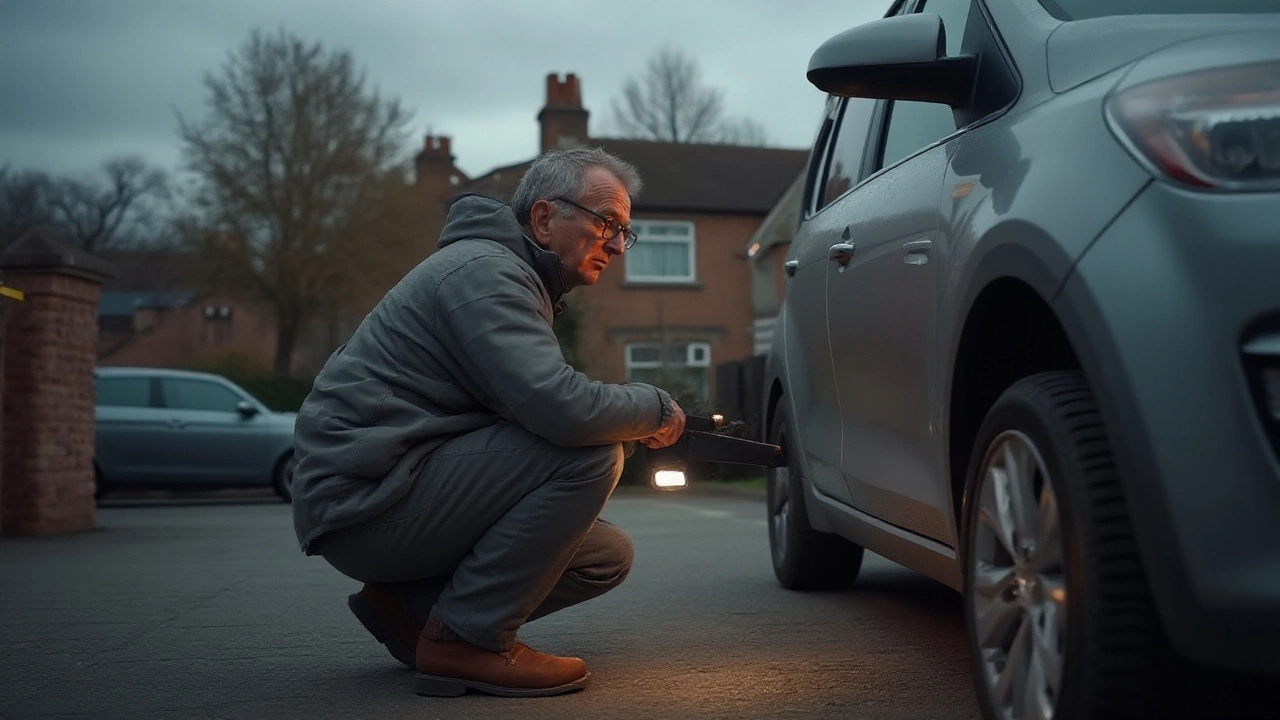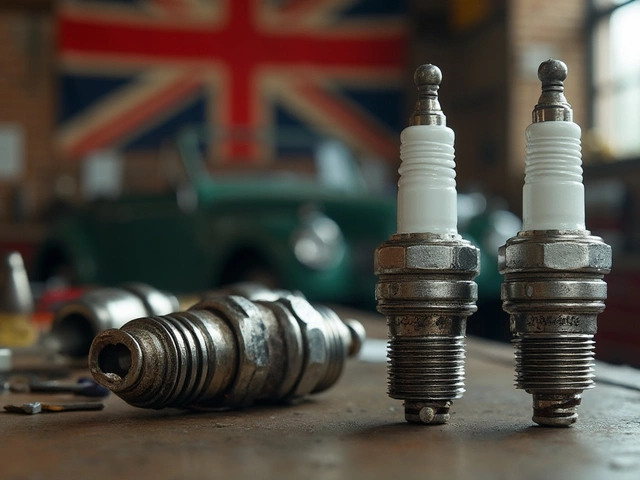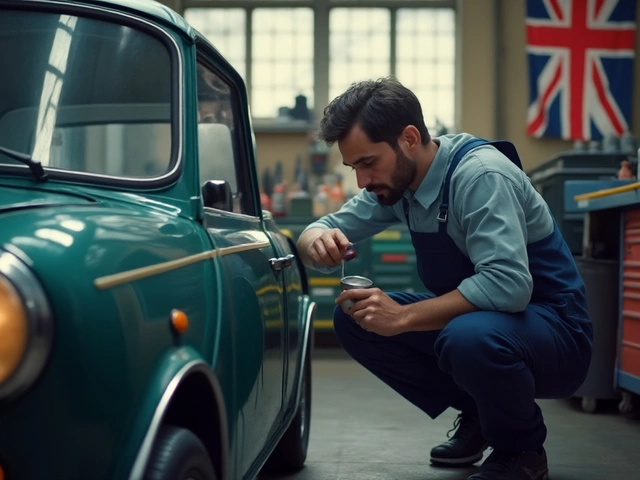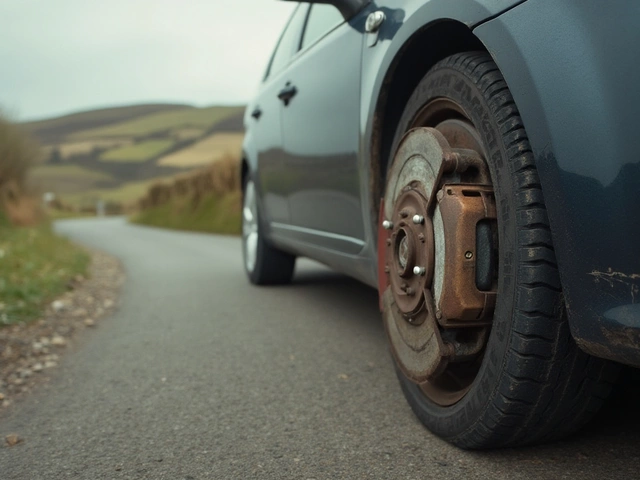Ever driven down a rough street in Bristol and thought the car seemed to have a mind of its own? I’ve had that same sinking feeling—the car pulls, the steering feels loose, and something’s just not right. Not every weird sound or odd bump means disaster, but when it’s the suspension, you can’t just look the other way. Bent suspension parts can turn a comfortable ride into a dangerous one, mess up your tyres, and cost a small fortune if left unchecked. Let’s get right into the thick of it–because let’s be honest, no one wants the car to end up in a worse spot (or to argue with a mechanic about what’s really wrong).
The Usual Suspects: What Causes Suspension to Get Bent?
Bent suspension rarely happens by magic. Most of the time, there’s a story to tell. Sometimes it’s hidden in that massive pothole you hit last Christmas. Other times, it’s squeezing through a tight parking space and accidentally tapping the curb a bit harder than intended. In the UK, where “road resurfacing” seems like the unicorn of city promises, potholes and sunken drains are everywhere. That extra thump isn’t just annoying—it’s a direct ticket to bent suspension land, especially if you’re driving a car with stiffer sportier setup, where there's less room for forgiveness.
I remember one autumn when my son, Miles, came running inside to tell me mum’s car was “leaning.” I thought he was joking—maybe imagining things, but I found the left side dipping lower, even though the drive seemed normal. A half-bent control arm later, I wished I’d checked sooner. Data from the RAC shines a light on the problem: nearly 20% of vehicle breakdowns in 2023 involved suspension or wheel-related faults, most triggered by impact damage.
Your car’s suspension is made of several main parts: control arms, struts, coil springs, ball joints, bushings, and tie rods. When any of these bend, everything gets thrown out of alignment. The trick is, sometimes these bends are subtle. On the outside, things might “look” normal, but the handling goes wonky. Sometimes you’ll see a wheel sitting at the wrong angle (the camber looks off), or the car leans more to one side. Don’t brush off a single incident: hitting a curb, deep pothole, or even a big speed bump too fast can cause trouble.
The biggest causes include:
- Hitting potholes — a massive culprit, particularly for lower cars
- Clipping curbs – even at slow speeds, curbs can twist control arms and tie rods
- Minor accidents – parking bumps or scrapes can bend suspension without visible body damage
- Severe rust – rare but possible; weakened points snap easier
So, think about your daily route. Any sudden jolt or “woah, that was a big hit” moment could have set things off. Keeping a mental note or, honestly, jotting down suspicious knocks can be a massive time saver if things start to feel off later on.
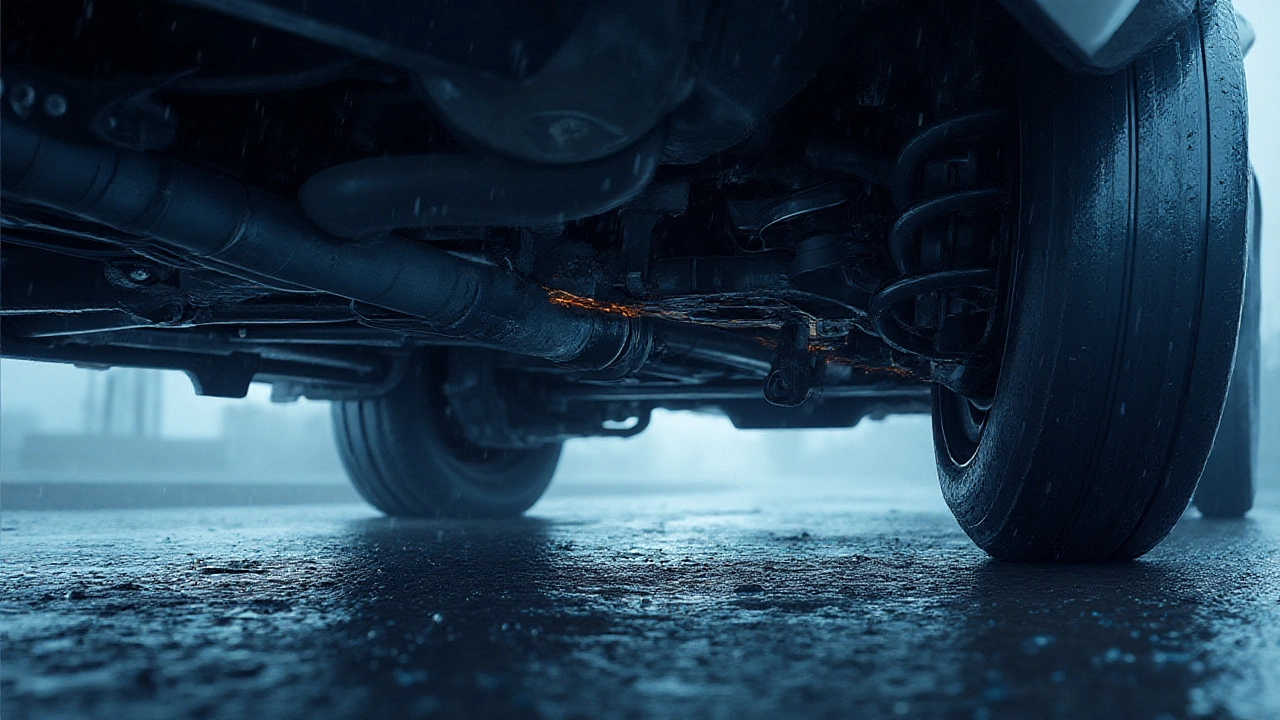
Clues Your Suspension Is Bent: Symptoms You Can’t Ignore
You don’t need a mechanical engineering degree to spot the warning signs. In fact, most drivers catch them with a mix of instinct and a bit of awareness. The classic symptoms include steering that no longer sits straight, weird noises especially when turning or hitting bumps, the car feeling unstable during braking, or tyres wearing out much faster on one side. When you know what to look for, you can spot trouble before it eats up your wallet.
- bent suspension throws off your alignment. If you notice the steering wheel is off-centre even when driving straight, something’s up. Pulling left or right could mean a bent arm or damaged strut.
- If your car suddenly “leans” more to one side, especially after an impact, that’s classic. Try measuring ground clearance with a tape measure – from the ground to the wheel arch on each side. More than a 10mm difference? Time for a professional check.
- Noises are your friend and enemy here. Clunks on bumps, moans while turning, creaks when you get in or out—they often mean bushings, joints, or springs aren’t happy. A knock that repeats could be a ball joint or tie rod no longer keeping things in place the way they should.
- Tyre wear can be an instant red flag. Check for uneven wear—feathering, bald spots, or a sawtooth pattern usually mean something in the suspension geometry is wrong. My neighbour, Chris, burned through a new set of tyres in months after thinking he could “deal with” a mild steering pull.
- Braking feels different. The car might twitch or wander when you stop hard. That’s not just the ABS—bent parts in the suspension can cause instability.
- Look under the wheel arch (parked, handbrake on, safe spot!). If you see parts looking out of line or a wheel sitting oddly in the arch (further forward/back than on the other side), take a photo and compare both sides. Obvious bends or buckling—time to get help.
Here’s a quick table with check points and what to watch for:
| Symptom | What It Might Mean |
|---|---|
| Steering wheel not centred | Bent tie rod/control arm |
| Leans to one side | Bent spring or arm, sagging component |
| Clunks, knocks over bumps | Misaligned joint, loose/bent linkage |
| Fast tyre wear on one side | Wrong geometry, possible bent strut/knuckle |
| Weird wheel position in arch | Bent suspension mount or arm |
| Braking instability | Bent suspension/steering linkage |
Let’s clear something up: not every odd knock means bent hardware. Sometimes it’s just worn bushings or a dodgy wheel bearing. But if the car suddenly changes behaviour after a bump or impact and these signs show up, don’t ignore it. Even on modern cars with lots of tech, the first clue is usually something your gut tells you while driving.

How to Inspect Suspension at Home (And When to Call the Pros)
You don’t have to be a garage wizard to do some basic checks, but safety always comes first. Don’t crawl under a car supported only by a jack—always use stands, chocks, and keep kids well away (Miles gets the pep talk every time!). The best place to start? A flat driveway or clear spot, full daylight, and a notebook for comparison.
- Wheel Arch Gap Check: With the car parked, measure the gap from the top of each tyre to the arch. Do both sides match? More than a centimetre difference, especially after hitting something, is a worry.
- Visual Alignment Spotting: Stand at the front and rear of your car, crouch down, and line up both front (or back) wheels. Are they visibly pigeontoed (inwards) or splayed out? Differences usually mean the suspension geometry is off.
- Tyre Wear Inspection: Run your hand along the tread on each tyre. Trophy smooth one side, raised the other, cupped, or “scalloped” patterns mean something’s up. Usually, this is caused by misalignment, but persistent issues mean a bent part.
- Turn and Listen: Start the car, turn the wheel fully one way, then the other while stationary. Odd pops or creaks almost always reveal issues in the suspension or steering.
- Under-Car Comparison: Jack the car up securely, pull the wheel, and compare both sides’ suspension arms and struts. Bent or kinked metal, crushed rubbers, or odd angles (when compared with the safe side) are strong suspects.
- Steering Feel: Take a slow spin around the block. Does the wheel feel light, vague, heavy, or pull? That’s worth noting for your mechanic.
- Look for Leaks: Bent struts sometimes leak oil down the shaft. If you see oily residue only on one side, that side’s probably the one damaged in an impact.
If any one of these steps looks off or you’ve got more than one sign, time to get professional help. Shops have alignment machines that measure down to the millimetre. Don’t bother driving far—tyre shops can usually check basic suspension alignment fast, and most will give you a printout.
One thing most people miss: accident history. Even a minor fender bender from months back can flash up as suspension trouble now, especially if parts were never checked. So, if you’re buying a used car or looking over your partner’s runabout, always ask for old accident reports or look for recently replaced parts.
One more Bristol-specific tip: if you regularly drive over that brutal section of the A4 or the pizza delivery bloke hits every speed bump on your street at speed, add monthly suspension checks to your car routine. It only takes five minutes, and catching issues early means saving loads on repairs and tyres.
Don’t be embarrassed if this sounds familiar. Cars aren’t meant to live forever, and our roads certainly don’t help. A bit of care, listening to odd sounds, feeling how your car responds, and checking now and then keeps us and our families safer—and helps avoid the much dreaded garage ‘surprise bill’ no one likes to see sitting on the kitchen table.

